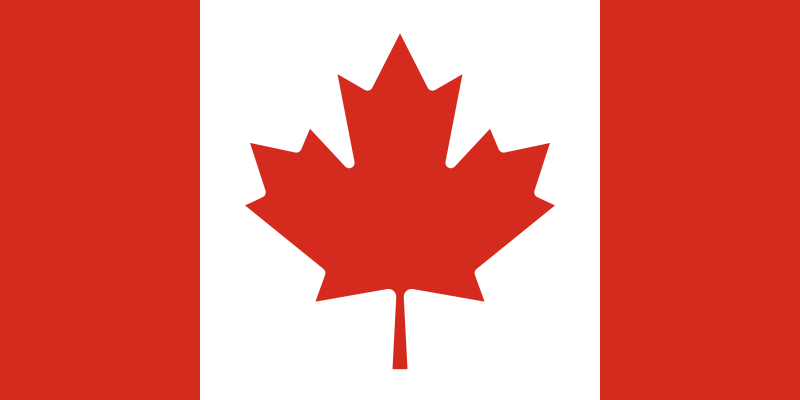Design: The design of the Canadian flag is characterized by its elegant and understated composition, comprising three key elements:
Vertical Bands of Red: The flag is divided vertically into two equally sized red bands that run from the hoist (the side of the flag closest to the flagpole) to the fly (the free end of the flag). This departure from the previous Red Ensign, which featured the Union Jack, underscores Canada's move towards a distinct national identity.
Central Maple Leaf: Positioned prominently between the red bands, the flag's centerpiece is a meticulously crafted, symmetrical red maple leaf with eleven finely pointed lobes. The leaf's graceful curves and balanced form exhibit meticulous design. These eleven points correspond to Canada's ten provinces and one territory at the time the flag was adopted. This iconic maple leaf, with its deeply ingrained symbolism, embodies Canada's natural splendor, cultural diversity, and the rhythmic cycle of its seasons.
Color Palette: The color selection for the Canadian flag is laden with historical and emblematic significance:
Rich Red Hue: The flag's red hue, aptly named "Canada Red," is a vivid and robust shade representing valor, sacrifice, and resilience. Additionally, it serves as a subtle homage to Canada's historical ties with the United Kingdom.
Crisp White Background: In contrast to the red maple leaf, the flag's background is a pristine white. This shade symbolizes purity, serenity, and impartiality. The stark white canvas serves to accentuate the central maple leaf, creating a visually arresting juxtaposition with the vivid red bands.
Symbolic Meaning: The Canadian flag's symbolism is deeply intertwined with the nation's history, values, and aspirations:
Unity in Diversity: Designed as a unifying emblem, the flag transcends cultural and linguistic diversity, embodying a shared national identity. The single maple leaf is a visual embodiment of this unity, signifying Canada's amalgamation of diverse provinces and territories into a cohesive whole.
Promotion of Peace and Neutrality: The flag's unembellished design, devoid of political or colonial symbols, embodies Canada's dedication to global peace and diplomacy. By eschewing overt political or religious connotations, the flag underscores Canada's commitment to an inclusive and neutral stance.
Fostering National Identity: The adoption of the Canadian flag marked a pivotal juncture in carving out a distinctive national identity free from colonial influences. The maple leaf, uniquely Canadian and ubiquitous throughout the land, transformed into a compelling emblem of this newfound identity.
Celebrating Natural Beauty: The maple leaf's affiliation with Canada's sprawling forests and pristine natural landscapes underscores the nation's profound bond with its environment. It serves as a poignant reminder of nature's significance in Canadian culture and collective consciousness.
Enduring Legacy and Global Recognition: The Canadian flag has evolved into an internationally recognized symbol emblematic of Canada's principles and virtues. Celebrated fervently by Canadians both domestically and abroad, it serves as an emblem of pride and identity. The flag's distinctive design and profound symbolism contribute to its enduring appeal and its status as a potent representation of the nation.
In sum, the Canadian flag stands as a testament to Canada's storied past, unity, and multiplicity, encapsulating the very essence of the nation and its people within an elegantly uncomplicated yet profoundly meaningful design.
Last Updated on: November 13, 2025
